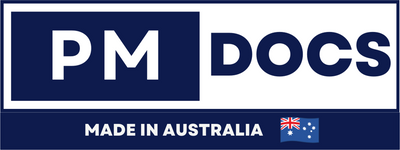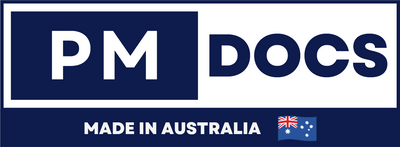NIST vs ISO vs ASD: Comparing Top Cybersecurity Frameworks In Australia
Introduction
In today's digital age, cybersecurity is more important than ever. With the rapid expansion of digital platforms and increasing cyber threats, organizations must ensure their data and systems are protected. These threats range from data breaches to ransomware attacks, making it imperative for businesses to have a robust cybersecurity strategy in place. In Australia, several cybersecurity frameworks guide businesses in implementing effective security measures. Among the most recognized are the NIST, ISO, and ASD frameworks. This article will delve into these frameworks, comparing their strengths and applications to help you choose the best fit for your organization.

Why Cybersecurity Frameworks Matter
Cybersecurity frameworks are essential for several reasons:
-
Consistency: They provide a consistent approach to managing cybersecurity risks. This consistency ensures that all departments within an organization are aligned in their efforts to secure digital assets, creating a unified defense strategy.
-
Compliance: Frameworks help organizations comply with regulatory requirements. In Australia, adhering to these frameworks can also aid in meeting national and international legal obligations, which is crucial for businesses operating across borders.
-
Risk Management: They offer methodologies to identify, assess, and mitigate risks. By systematically analyzing potential threats, businesses can prioritize their cybersecurity efforts, allocating resources to areas that are most vulnerable to attacks.
Beyond these reasons, cybersecurity frameworks also facilitate continuous improvement within an organization. By regularly updating and refining their practices in accordance with these frameworks, businesses can stay ahead of emerging threats and adapt to the ever-changing cybersecurity landscape. Furthermore, frameworks often include provisions for incident response and recovery, ensuring that organizations are prepared to swiftly deal with any security breaches and minimize potential damage.
The NIST Cybersecurity Framework
The NIST Cybersecurity Framework, developed by the National Institute of Standards and Technology, is widely used across the globe. It consists of five core functions: Identify, Protect, Detect, Respond, and Recover. These functions work together to provide a high-level, strategic view of an organization's management of cybersecurity risk. By following these functions, organizations can build a comprehensive cybersecurity program that addresses both current and future threats.
1. Key Features Of NIST
-
Comprehensive Scope: NIST covers a broad range of cybersecurity practices, from technical controls to policy and procedural recommendations. This breadth ensures that organizations can address all facets of cybersecurity, from infrastructure to human factors.
-
Flexibility: It can be tailored to fit different organizational needs, regardless of size or industry. This adaptability makes it particularly appealing to businesses with diverse operations, allowing them to implement the framework in a manner that complements their unique risk profiles and business objectives.
-
Global Recognition: Widely adopted internationally, making it ideal for organizations with global operations. This recognition not only facilitates smoother cross-border collaborations but also enhances an organization's reputation in the global market.
The NIST framework also encourages a culture of security within organizations. By promoting continuous learning and improvement, it ensures that cybersecurity remains a dynamic and integral part of an organization's operations. Moreover, the framework's emphasis on collaboration and information sharing helps organizations benefit from collective knowledge and experiences, further strengthening their cybersecurity posture.
2. Application In Australia
While originally developed for U.S. businesses, the NIST framework is applicable in Australia and aligns well with local cybersecurity practices. Its comprehensive nature and flexibility make it an attractive option for Australian businesses looking to align with international best practices. Many Australian organizations adopt NIST due to its comprehensive nature and flexibility. This adoption not only helps businesses enhance their cybersecurity measures but also positions them favorably in the global marketplace.
The ISO/IEC 27001 Standard
The ISO/IEC 27001 is part of the International Organization for Standardization's family of standards. It focuses on establishing, implementing, maintaining, and continually improving an information security management system (ISMS). This standard provides a systematic approach to managing sensitive information, ensuring its confidentiality, integrity, and availability.
1. Key Features of ISO/IEC 27001
-
ISMS Focus: Provides a systematic approach to managing sensitive company information, helping organizations protect their data from unauthorized access, disclosure, alteration, and destruction.
-
Risk-Based Approach: Encourages regular risk assessments and management, enabling organizations to identify and address vulnerabilities proactively. This approach also helps in prioritizing security efforts and resources based on the organization's specific risk landscape.
-
Certification: Organizations can become certified, demonstrating compliance and commitment to information security. This certification is often a requirement for businesses looking to establish partnerships or enter new markets, as it signifies a robust and credible approach to cybersecurity.
In addition to these features, ISO/IEC 27001 fosters a culture of continuous improvement. By regularly reviewing and updating their information security management system, organizations can adapt to evolving threats and ensure their cybersecurity measures remain effective. This ongoing process not only strengthens an organization's defenses but also enhances its resilience against potential breaches.
2. Application in Australia
ISO/IEC 27001 is well-regarded in Australia, particularly among organizations seeking formal certification. It is recognized for its structured approach and is often required by partners or clients as a prerequisite for business. This recognition underscores the importance of ISO/IEC 27001 as a benchmark for information security management, making it a valuable asset for businesses operating in competitive markets.
In Australia, the adoption of ISO/IEC 27001 is not limited to large enterprises. Small and medium-sized businesses also benefit from its structured approach, gaining a competitive edge by demonstrating their commitment to cybersecurity. Furthermore, the standard's emphasis on risk management and continuous improvement aligns well with Australian regulatory requirements, ensuring businesses remain compliant while safeguarding their digital assets.
The Australian Signals Directorate (ASD) Essential Eight
The ASD Essential Eight is a set of strategies to mitigate cybersecurity incidents, developed by the Australian Signals Directorate. It focuses on eight essential strategies to prevent malware delivery and execution, limit the extent of cyber incidents, and recover data and system availability. These strategies provide a practical framework for organizations to enhance their cybersecurity defenses, particularly against common threats.
1. Key Features of ASD Essential Eight
-
Practical Guidance: Provides clear, actionable strategies for organizations, making it easy for businesses to implement effective cybersecurity measures without needing extensive resources or expertise.
-
Focus on Mitigation: Emphasizes practical steps to prevent and limit the impact of incidents, helping organizations minimize potential damage and ensure business continuity in the event of a cyberattack.
-
Government-Endorsed: Specifically tailored for the Australian context, ensuring that organizations can meet local cybersecurity requirements while benefiting from government support and guidance.
The ASD Essential Eight also promotes a proactive approach to cybersecurity. By focusing on prevention and mitigation, it encourages organizations to address potential vulnerabilities before they can be exploited by cybercriminals. This proactive stance not only enhances an organization's defenses but also reduces the likelihood of successful attacks.
2. Application in Australia
The ASD Essential Eight is particularly relevant for Australian government agencies and organizations looking for practical, straightforward cybersecurity guidance. It is also beneficial for businesses that prioritize compliance with local standards. By adopting these strategies, organizations can demonstrate their commitment to cybersecurity while aligning with national priorities and policies.
Comparing The Frameworks
1. NIST vs. ISO/IEC 27001 vs. ASD Essential Eight
-
Scope: NIST and ISO/IEC 27001 offer broader scopes, addressing a wide range of cybersecurity issues, while ASD Essential Eight provides targeted strategies focused on prevention and mitigation.
-
Flexibility: NIST is highly flexible, allowing organizations to tailor its implementation to their specific needs. ISO/IEC 27001 requires adherence to its ISMS, providing a structured approach that ensures comprehensive information security management. ASD focuses on specific, actionable strategies, making it particularly suitable for organizations seeking straightforward guidance.
-
Certification: ISO/IEC 27001 offers certification, providing a formal recognition of an organization's commitment to information security. In contrast, NIST and ASD do not offer certification, though they provide valuable frameworks for enhancing cybersecurity.
-
Adoption: NIST is globally recognized and widely adopted by organizations with international operations. ISO is internationally certified and respected, making it a preferred choice for businesses seeking formal recognition. ASD is Australian-specific, providing tailored guidance for organizations operating within the local context.
When comparing these frameworks, it's important to consider the unique needs and objectives of your organization. Each framework offers distinct advantages, and the choice will depend on factors such as the organization's size, industry, and cybersecurity goals. By carefully evaluating these factors, businesses can select the framework that best aligns with their strategic priorities and risk management needs.
2. Choosing the Right Framework
Selecting the right framework depends on several factors, including your organization's size, industry, and specific security needs. Here are some considerations:
-
Global vs. Local: Consider whether your business requires international recognition (ISO, NIST) or local compliance (ASD). If your organization operates across borders, adopting a globally recognized framework may be advantageous.
-
Certification Needs: If certification is essential, ISO/IEC 27001 is a suitable choice. This certification can enhance your organization's credibility and open doors to new business opportunities.
-
Specific Guidance: For straightforward, actionable strategies, ASD Essential Eight is ideal. Its practical focus makes it a valuable resource for organizations seeking to quickly enhance their cybersecurity defenses.
Ultimately, the decision should be guided by a thorough assessment of your organization's risk profile, regulatory obligations, and strategic goals. By aligning your choice with these factors, you can ensure that your cybersecurity framework supports and enhances your organization's overall mission and objectives.
Conclusion
In conclusion, cybersecurity frameworks are vital tools for protecting your organization against cyber threats. Whether you choose the globally recognized NIST and ISO/IEC 27001 or the locally tailored ASD Essential Eight, implementing a robust cybersecurity framework is essential for safeguarding your business. These frameworks not only help in mitigating risks but also enhance an organization's credibility and trustworthiness.




